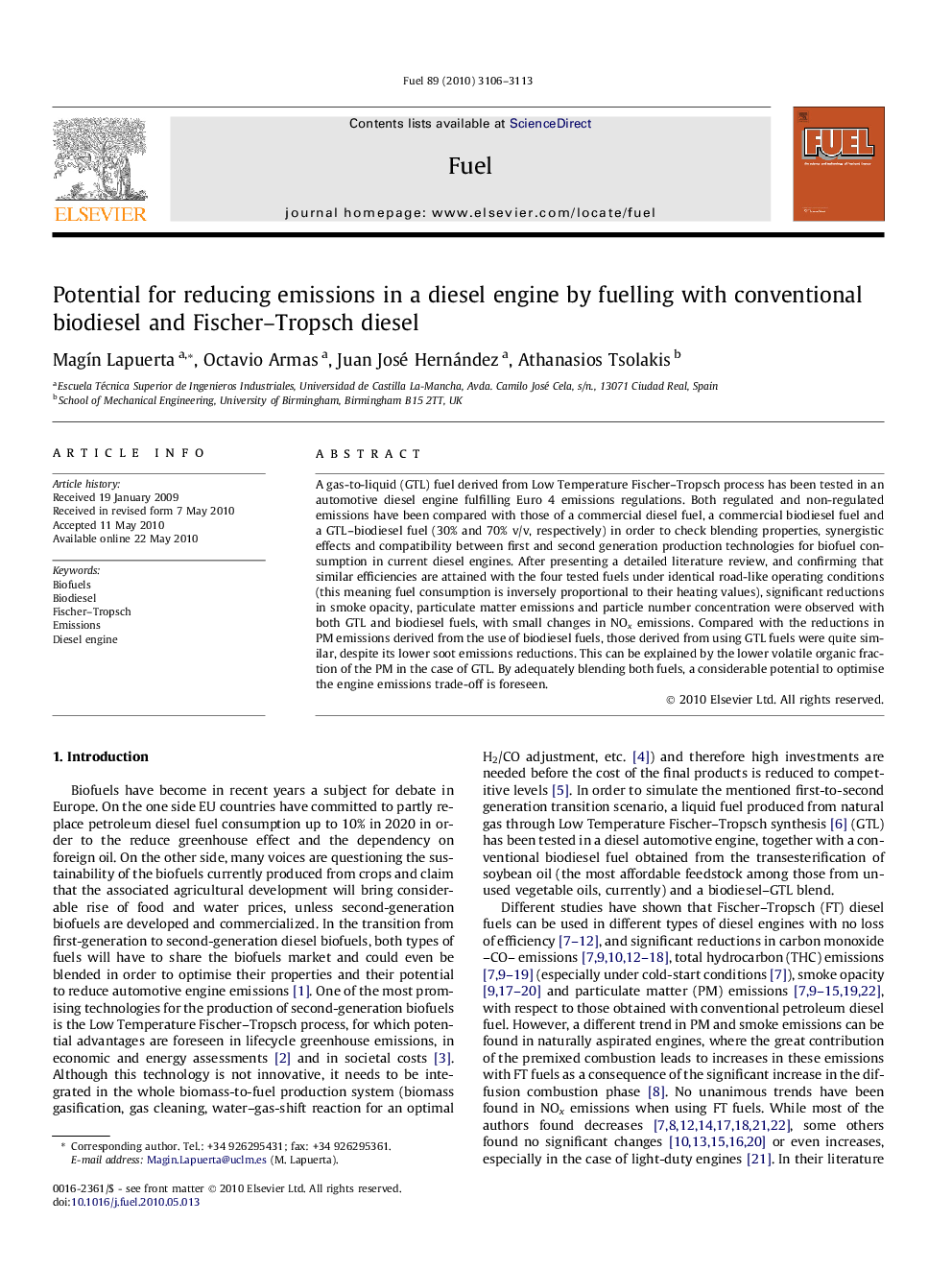| Article ID | Journal | Published Year | Pages | File Type |
|---|---|---|---|---|
| 206578 | Fuel | 2010 | 8 Pages |
A gas-to-liquid (GTL) fuel derived from Low Temperature Fischer–Tropsch process has been tested in an automotive diesel engine fulfilling Euro 4 emissions regulations. Both regulated and non-regulated emissions have been compared with those of a commercial diesel fuel, a commercial biodiesel fuel and a GTL–biodiesel fuel (30% and 70% v/v, respectively) in order to check blending properties, synergistic effects and compatibility between first and second generation production technologies for biofuel consumption in current diesel engines. After presenting a detailed literature review, and confirming that similar efficiencies are attained with the four tested fuels under identical road-like operating conditions (this meaning fuel consumption is inversely proportional to their heating values), significant reductions in smoke opacity, particulate matter emissions and particle number concentration were observed with both GTL and biodiesel fuels, with small changes in NOx emissions. Compared with the reductions in PM emissions derived from the use of biodiesel fuels, those derived from using GTL fuels were quite similar, despite its lower soot emissions reductions. This can be explained by the lower volatile organic fraction of the PM in the case of GTL. By adequately blending both fuels, a considerable potential to optimise the engine emissions trade-off is foreseen.
